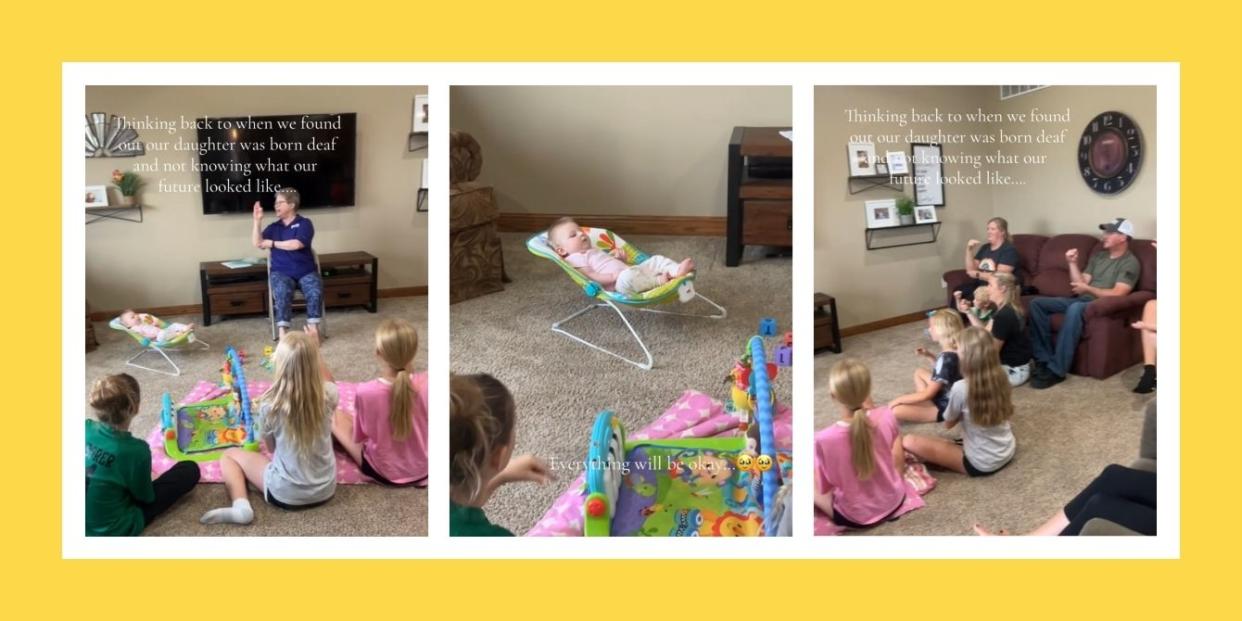Watch this entire extended family learn ASL to communicate with deaf baby and try not to cry

Are you ready to cry today? Because this is your fair warning—you don’t want to press play on this viral TikTok video without some tissues nearby.
Mom Angie Marie posted this video that has spread across the internet and is warming hearts everywhere. It shows her entire extended family taking an American Sign Language (ASL) class together after her new baby was born deaf. The video pans around the room showing more than 20 people, from children to grandparents and everyone in between, learning how to sign their ABCs together.
“Thinking back to when we found out our daughter was born deaf and not knowing what our future looked like…” Angie wrote over the video. “Seven months later and our families are learning ASL right along with us… Everything will be okay…”
In the caption, she added, “Ohana means family, family means no one gets left behind or forgotten.”
In the comments, tons of people wrote about how touched they were by this family’s sweet display of love and support for their new arrival.
“Okay but the WHOLE family, not just immediate family,” one viewer wrote.
Another chimed in, “That little girl has a village behind her and so do you.”
Yet another wrote, “Yes!! I love this! This is the definition of inclusion. When a disability is turned into different abilities.”
According to the National Institute on Deafness and Other Communication Disorders, between two and three out of every 100 children are born with a detectable level of hearing loss in one or both ears. The Institute also notes that 90% of deaf kids are born to hearing parents.
When the whole family learns ASL, a deaf child has full access to communication in their natural language from birth. This facilitates normal language and cognitive development. Learning and using ASL together allows the deaf child to fully participate in family conversations, jokes, stories, etc., which promotes family closeness, understanding, and the child’s sense of belonging. Deaf culture is centered around ASL and shared experiences—by learning ASL, hearing families show acceptance and value for their child’s identity as a culturally deaf person.
Handtalk says that more than 70 million deaf people around the world use sign languages to communicate, and according to the Commission of Deaf and Hard of Hearing, that includes around half a million people in the U.S. who speak American Sign Language as their native language.


